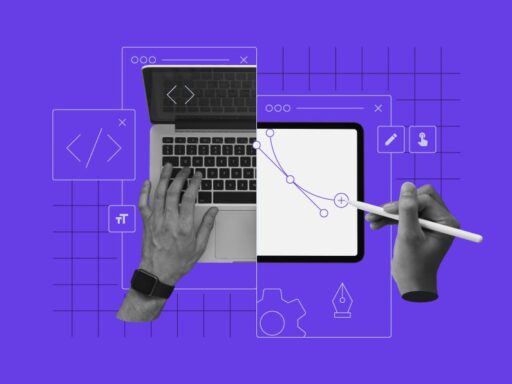- Introduction to Design Thinking: Begin by explaining what design thinking is and why it’s valuable for organizations. Define the key principles of design thinking, such as empathy, iteration, and a bias towards action.
- The Workshop Structure: Outline the typical structure of a design thinking workshop, including the stages of empathy, definition, ideation, prototyping, and testing. Describe how each stage contributes to the overall problem-solving process.
- Benefits of Design Thinking Workshops: Discuss the benefits that design thinking workshops can bring to teams and organizations. This may include fostering collaboration, unlocking creativity, driving innovation, and enhancing user-centered design.
- Case Studies: Provide real-world examples of organizations that have successfully implemented design thinking workshops. Highlight specific challenges they faced, how they used design thinking methodologies to address them, and the outcomes achieved.
- Preparing for a Workshop: Offer practical tips and best practices for preparing and facilitating a design thinking workshop. This could include setting clear objectives, assembling a diverse team, creating a conducive environment, and selecting appropriate tools and techniques.
- Empathy and User-Centered Design: Dive deeper into the importance of empathy in the design thinking process. Explore techniques for conducting user research, such as interviews, observations, and empathy mapping, to gain a deeper understanding of users’ needs and pain points.
- Ideation and Prototyping: Explore methods for generating and developing creative ideas during the ideation stage of the workshop. Discuss techniques such as brainstorming, mind mapping, and rapid prototyping, and how they can be used to bring ideas to life quickly and effectively.
- Overcoming Challenges: Address common challenges that teams may encounter during design thinking workshops, such as resistance to change, time constraints, and difficulty in synthesizing diverse perspectives. Offer strategies for overcoming these challenges and keeping the momentum going.
- Measuring Success: Discuss how success can be measured and evaluated in the context of design thinking workshops. This may include metrics such as increased team collaboration, higher levels of innovation, and improved user satisfaction.
- Continuing the Journey: Conclude by emphasizing the importance of continuous learning and improvement in the practice of design thinking. Encourage teams to apply the principles and techniques learned in the workshop to their ongoing projects and initiatives.
- Cultivating a Design Thinking Mindset: Explore the importance of fostering a culture of creativity, curiosity, and open-mindedness within teams. Discuss how adopting a design thinking mindset can lead to more innovative solutions and a willingness to embrace failure as a learning opportunity.
- Cross-Functional Collaboration: Highlight the value of bringing together individuals from diverse backgrounds, disciplines, and perspectives in design thinking workshops. Discuss how cross-functional collaboration can lead to more holistic solutions and break down silos within organizations.
- Tailoring Workshops to Specific Challenges: Provide guidance on how to customize design thinking workshops to address specific challenges or opportunities faced by teams. This could involve focusing on areas such as product development, service design, process improvement, or organizational change.
- Facilitation Skills: Offer tips and techniques for effective facilitation during design thinking workshops. Discuss the role of the facilitator in guiding the team through the process, encouraging participation, managing group dynamics, and ensuring that everyone’s voices are heard.
- Building Empathy with Stakeholders: Emphasize the importance of including stakeholders, such as customers, clients, or end-users, in the design thinking process. Discuss strategies for engaging stakeholders in empathy-building activities to gain deeper insights into their needs, preferences, and pain points.
- Iterative Design and Rapid Prototyping: Explore the concept of iterative design and the importance of prototyping as a means of testing and refining ideas quickly. Discuss how teams can use low-fidelity prototypes, such as sketches, mockups, or paper prototypes, to gather feedback and iterate on their designs.
- Creating a Safe Space for Experimentation: Encourage teams to embrace experimentation and risk-taking within design thinking workshops. Discuss the value of creating a safe space where team members feel comfortable sharing their ideas, taking creative risks, and challenging conventional thinking.
- Scaling Design Thinking Across the Organization: Discuss strategies for scaling design thinking beyond individual workshops and integrating it into the broader organizational culture. This could involve establishing communities of practice, providing training and resources, and fostering leadership support for design thinking initiatives.
- Celebrating Successes and Learning from Failures: Highlight the importance of celebrating successes and learning from failures as part of the design thinking process. Encourage teams to reflect on their experiences, identify lessons learned, and use them to inform future projects and workshops.
- Sustaining Momentum: Offer guidance on how to sustain momentum and momentum generated through design thinking workshops over the long term. This could involve establishing regular checkpoints, tracking progress against goals, and continuously iterating and improving processes based on feedback.
By incorporating these additional content elements, you can provide teams with a more comprehensive understanding of how to leverage design thinking workshops to drive innovation, collaboration, and problem-solving within their organizations.






